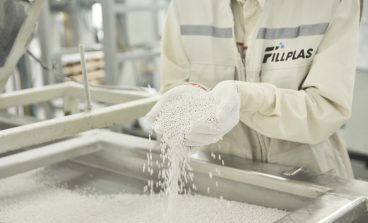
Like bottles and containers, plastic film can be made with a variety of plastic resins. Following is an explanation of some of the different resins with which film is made, a description of their properties and some of the applications in which they are commonly used.
LDPE/LLDPE RESINS
These two polyethylene resins often are talked about as if they are one because they have similar properties—both have good clarity, are good moisture barriers and fair gas barriers, can be heat sealed and are strong and highly flexible. They both are also used in similar applications, including but not limited to stretch wrap; shrink wrap; bags for produce, bakery goods, candy and ice; bags-in-a-box; boil-in-bags; carton liners; bubble packaging; envelope film; industrial liners; overwrap; shipping sacks; textile bags; mattress bags; grocery sacks; garment bags; trash and can liners; and agricultural and construction film.
They do, however, have some differences that make them preferable for different applications. For example, LDPE is often selected for its high clarity, ease of processing and high gloss. LLDPE, on the other hand, is selected for its tensile and impact strength (i.e., its toughness) as well as its heat sealability. LDPE tends to be used more often in things like food and nonfood packaging and shrink wrap; LLDPE is used more often in trash bags and stretch wrap.
HDPE RESINS
Because it is part of the polyethylene family, HDPE film is found in many of the same applications as LDPE and LLDPE. For example, HDPE film is used in bakery bags, carton and box liners, cereal and cake mix bags, shipping sacks, industrial liners, retail bags, grocery sacks, T-shirt bags, trash bags and liners, agricultural film, construction film and envelope material (such as Tyvek), as well as many other products and packages. In recent years, it has made inroads into the film market mostly because of its down-gauging properties, which allow manufacturers to use less material (i.e., source reduction) to make a package that can deliver an equal amount of product. HDPE also tends to be stiffer than other polyethylene films, which is an important characteristic for packages that need to maintain their shape. In addition, HDPE is strong and puncture resistant, has good moisture barrier properties and is resistant to grease and oils.
PP RESINS
PP film has excellent moisture barrier characteristics, good clarity, high gloss and good tensile strength. The resin also has a high melting point, which makes it desirable in packages that require sterilization at high temperatures. PP film commonly is used to package such things as cigarettes, candy, snack foods, bakery products, cheese and sanitary goods. It also can be found in shrink wrap, tape, tobacco wrap, diaper coverstock and the sterile wrap used in hospitals and other medical care facilities. Because PP has only average gas barrier properties, it often is used in combination with such things as a PVDC coating or acrylic, which provide additional barrier properties.
PVC RESINS
PVC film can be found in stretch wrap for industrial and pallet wrap (although in very small amounts), shrink wrap (again in very small amounts), some bags and liners, adhesive tape, labels, blood bags and I.V. bags. It also is used exclusively to package fresh red meats. That is because it is semipermeable, which, as mentioned earlier, means that just enough oxygen can pass through the film to keep the meat fresh and maintain its bright red color. PVC film also is a good barrier to oil and grease, is puncture resistant and has good cling and excellent clarity.
PET RESINS
PET film is mostly found in nonfood, nonpackaging applications, such as photographic film, x-ray film and magnetic audio and video recording film. It also is used in solar control film, overheads and ink jet films and in general laminations for things like business cards and luggage tags. Its primary packaging uses, however, are in metallized packages, such as those for potato chips and pretzels, as well as in microwave packaging, brick packs and medical packaging (such as sterile wrap and lidding material on pull-away packs). It also can be found in tobacco wrap, cigarette wrap and labels. PET is used in these and other applications because it has good mechanical properties—such as toughness and stiffness—and good thermal properties, which means it can withstand higher processing temperatures than some other resins. PET also can be clear or pigmented, which is advantageous in certain applications.



